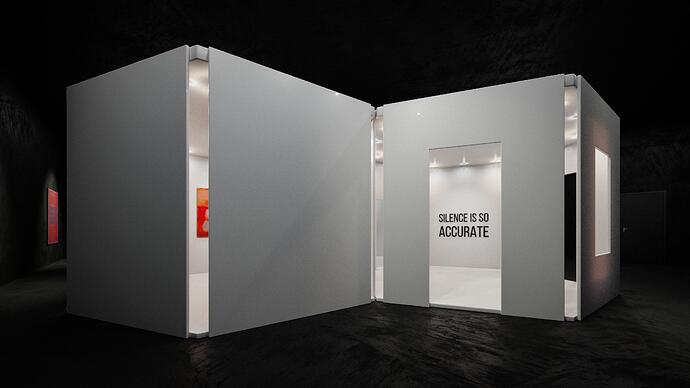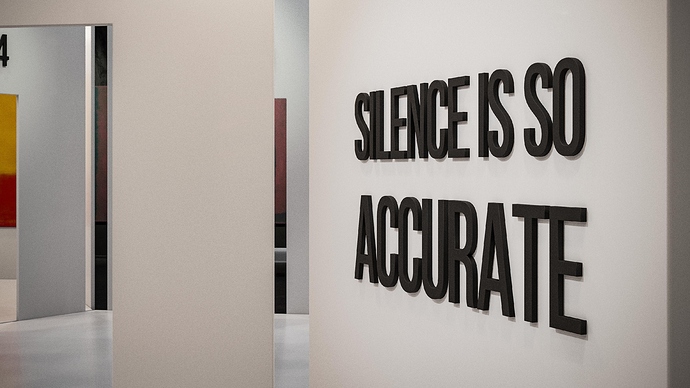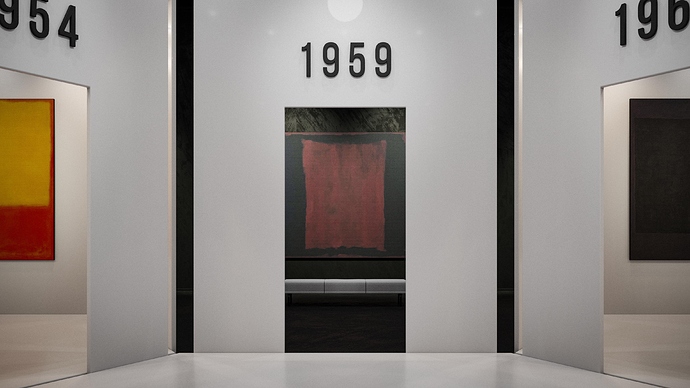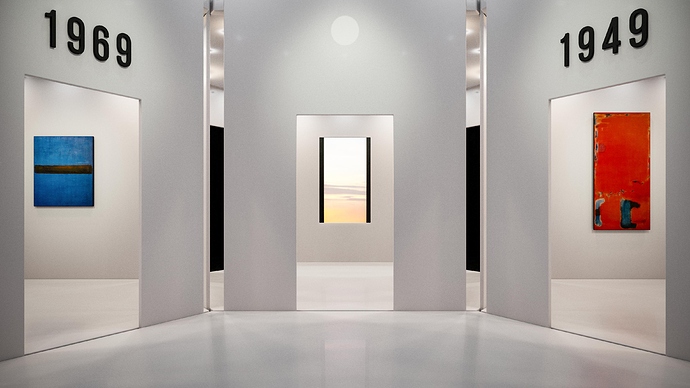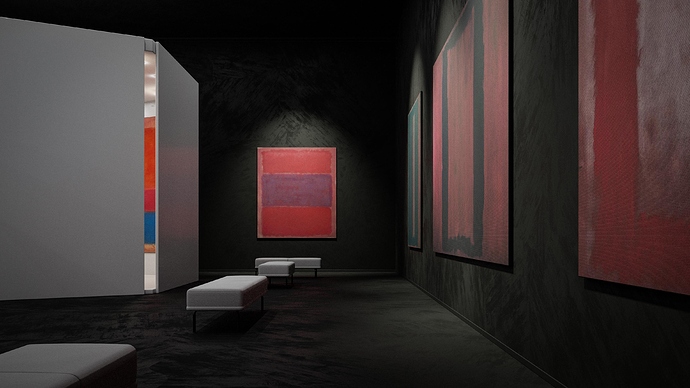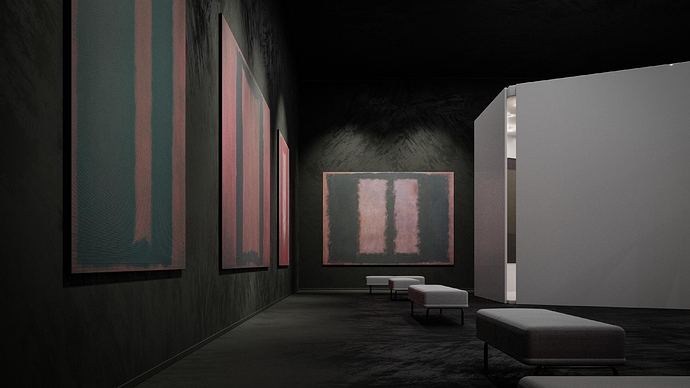“I’m not interested in relationships of color or form or anything else. I’m interested only in expressing basic human emotions: tragedy, ecstasy, doom… The people who weep before my pictures are having the same religious experience I had when I painted them. And if you, as you say, are moved only by their color relationships then you miss the point.”
Mark Rothko
Rothko once stated, “It would be good if little places could be set up all over the country, like a little chapel where the traveler or wanderer could come for an hour to meditate on a single painting hung in a small room, and by itself.” This exhibition / meditation space is partially influenced by Rothko’s wish and the chapel in Houston that he was commissioned to do murals for. The space aligns his wish of “little places of art meditation” with a showcase of the turning points of his art.
Starting from 1949, the works unfold in five year intervals. Divided into five distinct sub-spaces, the exhibition reveals five distinct periods of Rothko. The meditation ends at 1969, just one year before his suicide.
Sub-spaces are outlined with hexagons and each hexagon creates a meditative center that is metaphorically outlined by the artworks. The central hexagon that connects these sub-spaces is the exact core of the meditation. The slits between the exhibition panels allow the viewer to be completely encompassed by the totality of the works. Standing from a single snapshot of Rothko’s art, they become the glimpses into the vastness of his mind. Each hexagon borders its specific year besides the midpoint, 1959, which expands into an outer membrane, marking Rothko’s prologue into his darker times. This membrane turns darker in material in continuance of its significance. This continuous meditation taking place in centers of the sub-spaces and connected through one exact core is in alignment with the unfolding of Rothko’s history.
With its centric design, the exhibition also draws inspiration from Mandala meditation as a cosmic diagram that reminds one of their connection with the infinite. As Jung used the concept to center the ego in relation with the psychic wholeness, the space centers the viewer within its context. In a broader term, it relates the inner to the outer and the finite to the infinite. The meditative comfort and the primal aura surrounding his paintings are continued in the exhibition space with openings that look into the nature. In alignment with Rothko’s profound relationship with the natural, these frames act as reflections of Rothko and vice versa. They mirror the inner world of the artist and the viewer as the outer world.
